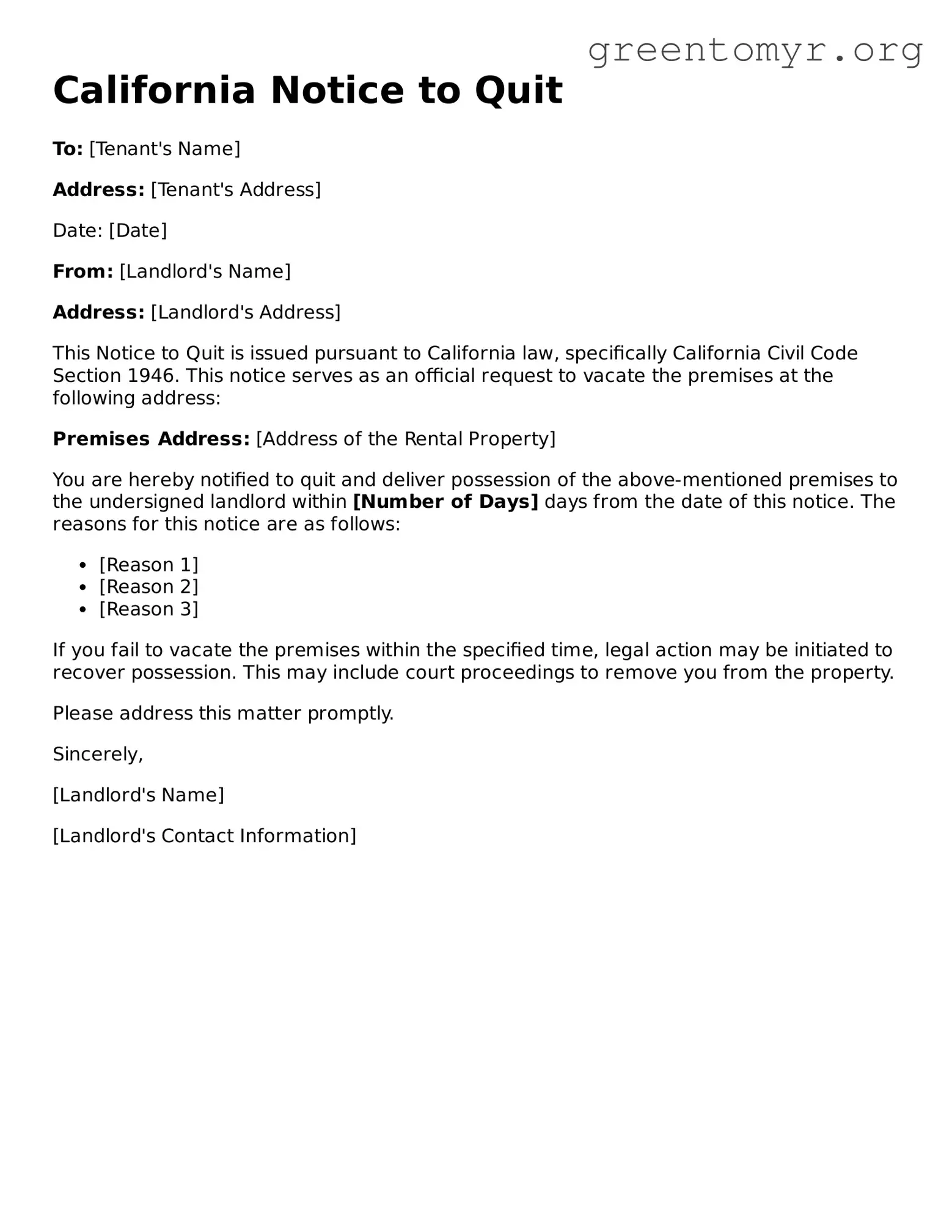What is a California Notice to Quit?
A California Notice to Quit is a legal document that a landlord uses to request a tenant to vacate the rental property. This notice can be issued for various reasons, such as non-payment of rent, lease violations, or eviction due to end of lease terms. Essentially, it serves as the first step in the eviction process, allowing the tenant a set amount of time to move out before further legal action can be taken.
When should a landlord issue a Notice to Quit?
A landlord may issue this notice when a tenant fails to fulfill specific obligations outlined in the lease agreement. Common situations include:
-
Non-payment of rent
-
Repeated violations of lease terms
-
Illegal activities on the property
-
Failure to vacate after the lease expiration
It's essential for the landlord to follow the proper procedures and comply with California laws to avoid complications.
How long does a tenant have to respond to a Notice to Quit?
The amount of time a tenant has to respond depends on the reason for the notice. Typically, tenants are given 3, 30, or 60 days to vacate, based on the following:
-
For non-payment of rent, tenants are usually given 3 days.
-
For lease violations, a 30-day notice is common.
-
For month-to-month leases ending, a 30- or 60-day notice may apply.
During this time, tenants should consider their options and may wish to seek legal advice.
Can a tenant contest a Notice to Quit?
Yes, a tenant can contest a Notice to Quit if they believe it was issued unfairly or without proper cause. They can respond to the notice in writing, outlining their reasons for disputing it. If the situation escalates to court, both the tenant and landlord can present their cases, and a judge will decide the outcome.
What happens if a tenant ignores the Notice to Quit?
If a tenant ignores the Notice to Quit, the landlord may proceed with the eviction process. This usually involves filing an unlawful detainer action in court. If the court rules in favor of the landlord, a sheriff may be authorized to remove the tenant from the property.
Is a Notice to Quit the same as an eviction notice?
No, a Notice to Quit is not the same as an eviction notice. The Notice to Quit is a request to vacate that typically precedes a formal eviction procedure. If the tenant does not leave within the specified time frame, the landlord may then pursue eviction through legal means.
Can a Notice to Quit be delivered electronically?
In California, Notices to Quit typically need to be served in person, by mail, or through a process server. However, there are specific regulations about delivering notices electronically. It's best to consult with legal guidelines or a professional for the most accurate, up-to-date information on notice delivery methods.
What should a tenant do after receiving a Notice to Quit?
Upon receiving a Notice to Quit, a tenant should take it seriously. It's advisable to read the notice carefully to understand the grounds for its issuance. Tenants should consider the following actions:
-
Seek legal advice, especially if they believe the notice is unjust.
-
Address any underlying issues, such as paying overdue rent or fixing lease violations.
-
Prepare to move if necessary, noting the deadline for vacating.
Taking proactive steps can help tenants navigate this situation more effectively.
